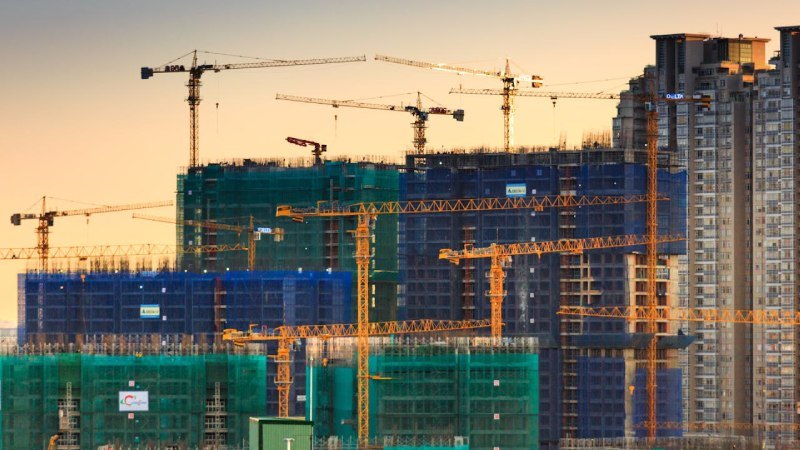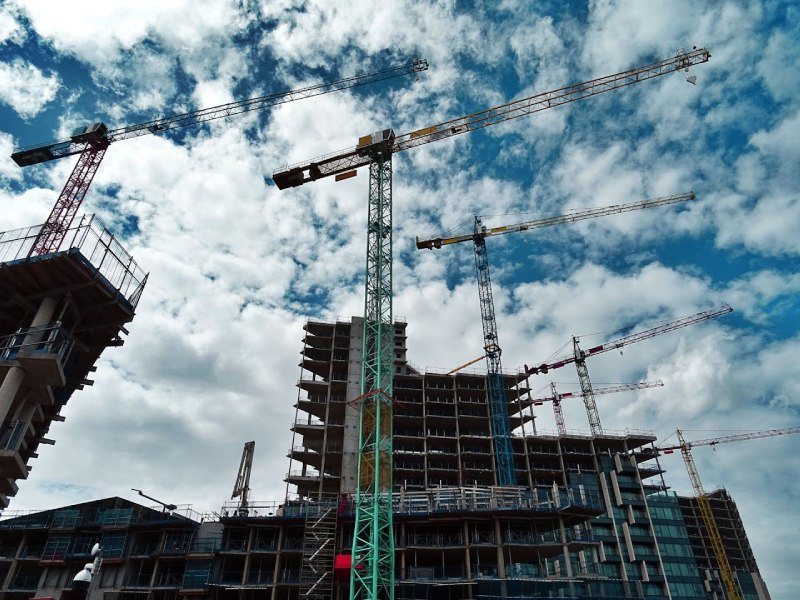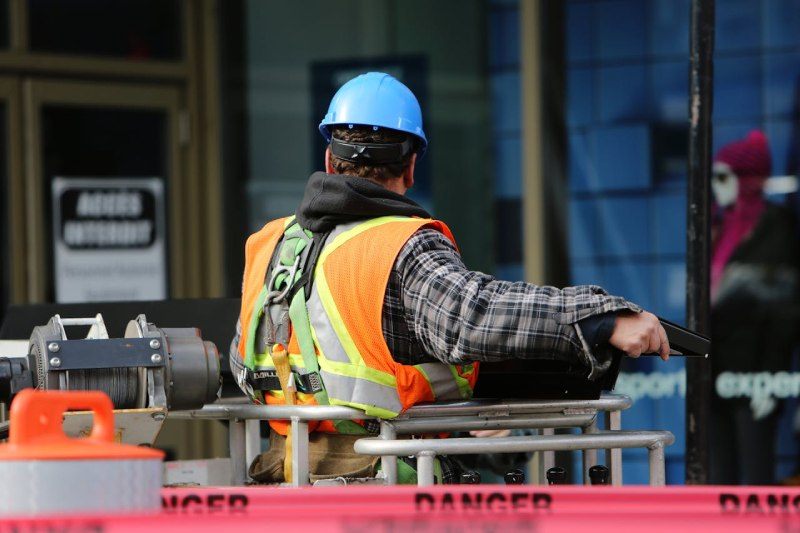Abstract:
As the construction industry faces growing demand in 2025, companies must adapt quickly to meet the market’s evolving needs. The construction landscape is changing unprecedentedly from rapid urbanization to technological advancements and sustainability initiatives. This article explores the key strategies for equipping construction sites to handle these challenges, focusing on technological innovations, safety improvements, sustainability practices, and workforce development. By embracing cutting-edge tools and equipment, such as versatile forklift hire services, construction companies can improve efficiency, reduce costs, and stay competitive in an increasingly demanding environment.

The construction industry is poised for significant changes in 2025 as the global demand for infrastructure development continues to rise. Rapid urbanization, emerging technologies, and sustainability initiatives are reshaping the construction landscape. This increased demand presents opportunities and challenges for construction companies, who must adapt quickly to remain competitive. One of the most critical aspects of this transformation is how construction sites are equipped to handle the industry’s evolving demands. Companies must rely on cutting-edge forklift hire services to swiftly and safely transport materials across busy sites to meet growing project requirements. This article explores the key strategies, tools, and technologies that will define the future of construction site management and operations in 2025.
The Construction Landscape in 2025
Before delving into the specifics of equipping construction sites for increased demand, it’s important to understand the broader context in which the industry is operating. Several factors are driving the surge in demand for construction services, including:
- Urbanization and Population Growth: As the global population grows, particularly in urban areas, the need for housing, commercial buildings, transportation infrastructure, and utilities has skyrocketed. This growth is particularly evident in emerging markets, where the construction industry is expected to see the most significant expansion in the coming years.
- Infrastructure Investments: Governments worldwide are investing heavily in infrastructure projects to support economic growth and improve quality of life. This includes the construction of new roads, bridges, airports, and renewable energy projects, all of which require significant resources and efficient project management.
- Sustainability and Green Construction: With growing concerns about climate change and resource conservation, the construction industry is increasingly focused on sustainability. Green building practices, energy-efficient designs, and the use of renewable resources are becoming standard, creating new demands on materials, machinery, and project timelines.
- Technological Advancements: Introducing new technologies, such as building information modeling (BIM), 3D printing, and artificial intelligence (AI), transforms construction projects’ design and execution. These innovations can streamline operations, reduce costs, and improve the quality of construction, but they also require new equipment and skills.
Given these trends, the demand for construction projects in 2025 will be greater than ever. To meet these demands, construction sites must be equipped with the latest tools, machinery, and technologies that enable companies to complete projects efficiently, sustainably, and within budget.
Key Considerations for Equipping Construction Sites

Equipping a construction site for the future requires a comprehensive approach. Construction managers and contractors must consider various factors, including technological integration, safety protocols, workforce management, and resource allocation. Below are some of the most important considerations for equipping construction sites to handle increased demand in 2025.
1. Embracing Technology and Automation
Over the past decade, one of the most significant shifts in the construction industry has been the increased adoption of technology and automation. In 2025, this trend is expected to accelerate, with cutting-edge tools and machines playing a central role in construction sites’ operations. Some of the key technologies that will define construction sites in the coming years include:
- Building Information Modeling (BIM): BIM allows construction companies to create digital representations of buildings, including detailed plans and 3D models. This technology enhances collaboration, reduces errors, and allows for more precise planning. As the demand for large-scale projects increases, BIM will become essential for managing complexity and ensuring that projects are completed on time and within budget.
- Drones and UAVs: Drones are already used for site surveys, inspections, and monitoring progress on construction projects. In 2025, drones will be more integrated into daily operations, providing real-time data and improving site management. This can significantly reduce labor costs and increase the accuracy of project tracking.
- Robotics and Automation: Robots are already being used in some construction sites for tasks such as bricklaying, welding, and even 3D-printing structures. These machines can work around the clock, improving efficiency and reducing the need for human labor. As technology advances, more construction tasks will be automated, helping to meet the growing demand for faster project completion.
- AI and Machine Learning: Artificial intelligence and machine learning can help construction companies optimize project schedules, predict potential delays, and identify safety risks. In 2025, AI-powered tools will be indispensable for streamlining project management and improving decision-making.
2. Focus on Safety and Compliance

Safety has always been a top priority on construction sites, but as the industry evolves and new technologies are introduced, ensuring the safety of workers and equipment becomes even more critical. In 2025, construction sites must be equipped with the latest safety technology to protect workers and comply with increasingly strict regulations.
- Wearable Safety Technology: In 2025, wearable devices will become more common on construction sites. These devices can monitor workers’ health and well-being in real-time, alerting supervisors to potential issues such as fatigue or unsafe behavior. Wearables can also track workers’ locations and movements, ensuring they are in safe areas and helping to respond quickly in an emergency.
- Safety Training and Simulations: Virtual reality (VR) and augmented reality (AR) are increasingly used for safety training. In 2025, these technologies will be more advanced, allowing workers to experience realistic training scenarios without exposure to the actual risks on a construction site. Construction companies can use VR and AR to ensure their workforce is better prepared for hazardous situations.
- AI and Predictive Safety: AI-powered safety systems will become increasingly common in 2025. These systems can analyze data from sensors and wearable devices to predict potential safety hazards before they occur. For example, AI can detect when equipment is being operated incorrectly or when a worker is at risk of injury based on their movements and environment.
3. Sustainability and Green Building Practices
As the construction industry moves toward greater sustainability, construction sites in 2025 must be equipped to handle the specific requirements of green building practices. These include using eco-friendly materials, minimizing waste, and reducing energy consumption during construction.
- Sustainable Materials: Construction companies will need to source and manage eco-friendly materials that minimize their projects’ environmental impact. In 2025, the demand for sustainable materials such as recycled steel, bamboo, and low-carbon concrete will increase, and construction sites will need to be prepared to handle these materials efficiently.
- Energy-Efficient Equipment: In 2025, the use of energy-efficient machinery and tools will become standard practice on construction sites. Equipment that runs on renewable energy sources, such as solar-powered generators, will help reduce construction projects’ carbon footprint.
- Waste Management Systems: With an increased focus on sustainability, construction companies will need to implement advanced waste management systems on their sites. These systems include the use of on-site recycling facilities, waste reduction technologies, and materials recovery systems to minimize construction waste.
4. Skilled Workforce and Training
The growing demand for construction projects in 2025 will require a highly skilled and well-trained workforce. Equipping construction sites with the right tools and technologies will only be effective if workers are adequately trained. Construction companies must invest in ongoing education and training programs to prepare their workforce for the challenges ahead.
- Skills Development: Workers must acquire new skills as automation and technology become more prevalent in construction. Companies must offer training in areas such as robotics, AI, and BIM to ensure that employees can operate and maintain the advanced tools and machines used on modern construction sites.
- Collaboration with Educational Institutions: In 2025, partnerships between construction companies and educational institutions will be more important than ever. Companies will need to collaborate with universities, trade schools, and vocational training centers to develop specialized programs that provide the skills needed for the future of construction.
5. Resource Management and Logistics
With the increased scale of construction projects, managing resources and logistics will become a critical challenge. Construction sites in 2025 must be equipped with sophisticated resource management tools for real-time tracking of materials, machinery, and labor.
- IoT and RFID Technology: In 2025, the Internet of Things (IoT) and radio frequency identification (RFID) will be instrumental in managing resources on construction sites. IoT-enabled devices can monitor the location and condition of equipment, while RFID tags can track the movement of materials and supplies. This will help construction companies avoid shortages and ensure that they have the necessary resources to meet the project’s demands.
- Supply Chain Optimization: As construction projects become more complex, companies must optimize their supply chains to ensure timely delivery of materials and equipment. Advanced software and AI tools will be crucial in predicting supply chain disruptions and helping companies make real-time adjustments to keep projects on schedule.
Conclusion
The construction industry is entering an exciting 2025 era characterized by rapid technological advancements, increased demand, and a heightened focus on sustainability. To meet these challenges, construction sites must be equipped with the latest tools, machinery, and technologies for efficient, safe, and environmentally responsible operations. By embracing automation, enhancing safety protocols, adopting green building practices, and investing in workforce training, construction companies can position themselves for success in the face of growing demand and a rapidly changing industry landscape. As the industry evolves, those who equip their construction sites for the future will be best positioned to thrive in 2025 and beyond.